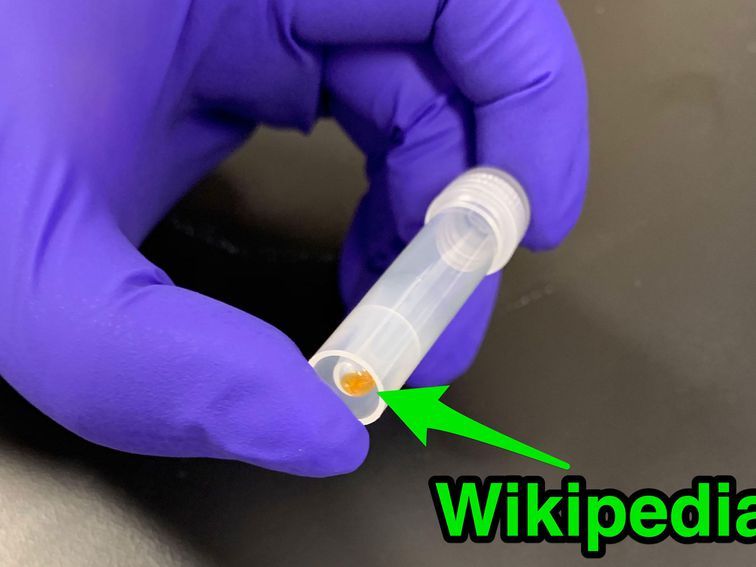So yea bro, you got the sensors to pick up the frequency you can hack it.



Cancer cells genetically engineered to fight their own kind.

To the scientists here, could humans live for 300 years?
Those portions of the modern longevity community interested in bringing an end to aging and extending healthy human life span indefinitely tend to be the older portions, people who have been a part of the broader movement for quite some time. Newcomers tend to be more moderate, aiming at lesser goals. Perhaps this is a result of the successful projects, such as the SENS Research Foundation and Methuselah Foundation, tending to moderate their rhetoric as they attract a broader and larger base of support. I think that this road to moderation might be a problem, and that there is thus a continued role for those who loudly declaim that the goal is to control aging absolutely, via new medical technology, and that the natural consequence of that control is healthy, active, youthful life that extends for centuries or more.
If the goals that our movement works towards are broadly watered down from radical life extension of centuries to just adding a few more years, then marginal projects that can do no more than add a few more years will come to dominate the field to the exclusion of everything else. We are already more or less in this situation, in that the vast majority of funding goes towards discovery and development of small molecules that tinker with the operation of an aged metabolism to make it a little more resilient to the underlying causes of aging. If that is all that is done, then we’ll all age and die on basically the same schedule as our parents and grandparents. It will be a grand waste of opportunity, given that we have the knowledge and the means to do far better, such as by following the SENS agenda for rejuvenation biotechnologies based on repairing the root causes of aging.
This popular media article looks at a few of the people who do make no bones about aiming at radical life extension. It isn’t terrible, thankfully, though it doesn’t quite manage to escape the straitjacket of conformity, the author suggesting that it is somehow strange to want to live for a long time in good health, or strange to want to avoid a slow, crumbling, painful death. There is no present status quo so terrible that it will not have its defenders, and for whatever reason the status quo of aging and suffering and omnipresent death and loss are aggressively defended. But setting that aside, the article manages to capture the present state of development and the viewpoints of its subjects quite well, which is a change over past years of media attention.



Conscious “free will” is problematic because brain mechanisms causing consciousness are unknown, measurable brain activity correlating with conscious perception apparently occurs too late for real-time conscious response, consciousness thus being considered “epiphenomenal illusion,” and determinism, i.e., our actions and the world around us seem algorithmic and inevitable. The Penrose–Hameroff theory of “orchestrated objective reduction (Orch OR)” identifies discrete conscious moments with quantum computations in microtubules inside brain neurons, e.g., 40/s in concert with gamma synchrony EEG. Microtubules organize neuronal interiors and regulate synapses. In Orch OR, microtubule quantum computations occur in integration phases in dendrites and cell bodies of integrate-and-fire brain neurons connected and synchronized by gap junctions, allowing entanglement of microtubules among many neurons. Quantum computations in entangled microtubules terminate by Penrose “objective reduction (OR),” a proposal for quantum state reduction and conscious moments linked to fundamental spacetime geometry. Each OR reduction selects microtubule states which can trigger axonal firings, and control behavior. The quantum computations are “orchestrated” by synaptic inputs and memory (thus “Orch OR”). If correct, Orch OR can account for conscious causal agency, resolving problem 1. Regarding problem 2, Orch OR can cause temporal non-locality, sending quantum information backward in classical time, enabling conscious control of behavior. Three lines of evidence for brain backward time effects are presented. Regarding problem 3, Penrose OR (and Orch OR) invokes non-computable influences from information embedded in spacetime geometry, potentially avoiding algorithmic determinism. In summary, Orch OR can account for real-time conscious causal agency, avoiding the need for consciousness to be seen as epiphenomenal illusion. Orch OR can rescue conscious free will.
Keywords: microtubules, free will, consciousness, Penrose-Hameroff Orch OR, volition, quantum computing, gap junctions, gamma synchrony.
We have the sense of conscious control of our voluntary behaviors, of free will, of our mental processes exerting causal actions in the physical world. But such control is difficult to scientifically explain for three reasons:


One of the Navy’s first AI projects, the autonomous submersible, will be delivered by BAE Systems and Envitia
The Royal Navy’s Route Survey and Tasking Analysis (RSTA) project aims to deliver an automated capability for detecting and rendering harmless underwater mines in UK waters by 2022. Currently, a fleet of mine-hunter ships use sonar to detect anomalies on the seabed, but the AI-enabled submersibles to be developed by BAE Systems Applied Intelligence and British geospatial data company Envitia are expected to work in a fleet to scan objects, identify threats and make decisions about what action to take much faster.